From Vintage to Modern: A Journey Through Jewelry Eras
Through the ages, jewelry has been integral to human history. Cultural influences and unique styles have marked its evolution through various eras. Whether you want to commission a new piece or sell an existing one, knowing its roots can help you get the most from your experience. Join us on a journey through the main jewelry eras, from its beginnings to the modern era.
Jewelry’s Beginnings
Ancient Egypt stands out as a pivotal chapter in all of jewelry history. Egyptian jewelry was not just an adornment but a status symbol and talisman. From gold necklaces to amulets, the craftsmanship of Ancient Egyptian styles of jewelry reflected the civilization’s reverence for the divine.
To the west, Ancient Rome and Greece left their own marks on jewelry design. The Romans favored intricate goldwork, while the Greeks preferred embellishments of gemstones and intricate filigree. Both civilizations celebrated the human form, and their jewelry reflected a balance of symbolism and aesthetics.
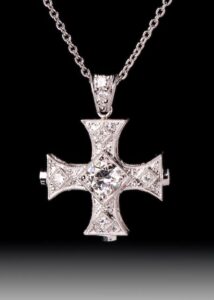
Jewelry became deeply intertwined with religion as the Middle Ages dawned. Crosses, gemstones, and religious motifs were prominent. The medieval craftsmanship mirrored the devout nature of society, with jewelry becoming a tangible expression of piety and faith.
Renaissance Jewelry (14th to 17th Centuries)
The Renaissance marked a period of cultural revival, and this renewal extended to the world of jewelry. Trade routes expanded, as did the variety of gemstones available to artisans. Renaissance jewelry traveled beyond Italy, influencing Europe with its innovation and opulence. These adornments featured vibrant gemstones and embraced asymmetry, unlike the jewelry of previous eras. Necklaces adorned with cameos and pearls gained popularity, and the use of enamel became more widespread. The jewelry of this era celebrated wealth and personal expression.
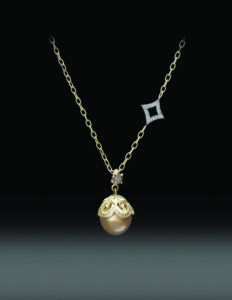
Georgian Era (1714-1830)
Lavishness defined the Georgian era, and jewelry was no exception. Elaborate designs featuring intricate gemstone arrangements and metalwork reflected this grandeur. During this time, mourning jewelry became more prominent, often incorporating the hair of the deceased as a way to commemorate them. Georgian jewelry featured various popular items, such as elaborate necklaces, ornate brooches, and tiaras. Diamonds, sapphires, and emeralds are just a few of the gemstones used to exemplify the commitment to sophistication and luxury.
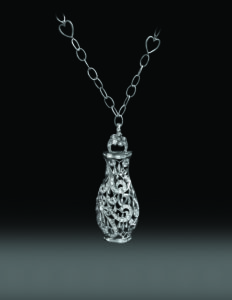
Victorian Era (1839-1901)
The Victorian era spanned a considerable time, seeing distinct phases in design. Early Victorian-era jewelry drew inspiration from nature, such as intricate leaf or floral motifs. The middle era saw a shift toward sentimentality, while the late Victorian period emphasized bold designs and favored diamonds and other gemstones. Antique Victorian jewelry also began the idea of conveying specific messages. Symbols such as hearts, flowers, and snakes were popular, as were lockets with hidden compartments for photos that the wearer could use to keep a cherished memory close.
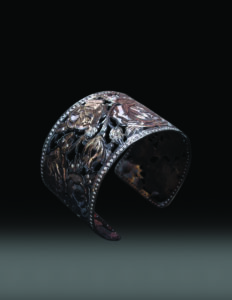
Art Nouveau (1890-1915)
The Art Nouveau period represented a departure from the rigid structures of earlier eras and a shift to more natural shapes and flowing lines. This artsy reformation in women’s antique jewelry truly captured the essence of the organic world. Elements such as unconventional gemstones, enameling, and horn revealed the artistic expression of a rebellious spirit.
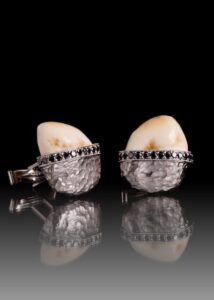
Edwardian (1901-1914)
The Edwardian era took an elegant approach influenced by the lavish lifestyle so typical during this time. The metal of choice for this old-fashioned jewelry was increasingly platinum, ideal for creating intricate lace-like designs. Diamonds and pearls took center stage, lending a romantic and ethereal quality to Edwardian jewelry.
Art Deco (1920-1935)
The Art Deco movement is known for the sense of modernity it brought to women’s vintage jewelry. Bold colors, geometric shapes, and a focus on machinery characterized this era. Like other decorative products of this era, jewelry showcased high contrast, symmetry, and materials such as jade and onyx. The impact of the Art Deco period extended well beyond the 1930s, influencing later design movements. Its bold, innovative approach laid the groundwork for a shift in aesthetics: a movement toward clean lines and geometric patterns.
Retro (1940s)
The Golden Age of Hollywood marked this decade with all its glamour and sophistication. Large statement pieces, often adorned with colorful gemstones, were popular. This vintage-style jewelry exuded a sense of celebration and luxury, embodying the exuberance and escapism of the era. Bold, sculptural designs were popular and often inspired by the style of movie stars. Yellow gold, oversized gemstones, and intricate detailing created a distinctive look that is still popular today.
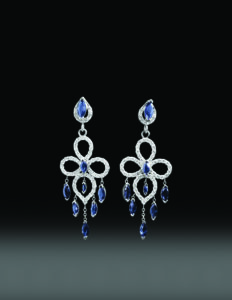
Mid-Century (1950s)
Mid-Century jewelry represented a change from traditional styles as designers experimented with abstract forms and unconventional materials. A newfound fascination with technology and space-age influences produced a spate of futuristic designs, highlighting the era’s signature dynamic spirit in vintage jewelry art from this decade.
Modern (1960s Onward)
Not surprisingly, ’60s jewelry enjoyed an era of unprecedented creativity, with the influence of pop art quite evident in jewelry designs. Playful motifs, experimental materials, and bold colors defined the period. Jewelry mirrored the cultural shifts of the time, becoming a form of self-expression. The ’70s jewelry styles and onward featured a rise in minimalist designs, featuring clean lines and simple shapes. Quality materials and understated elegance became the focus.
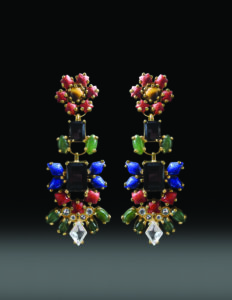
Reflecting on Jewelry Through the Eras
Contemporary jewelry design is very much a fusion of past and present. Influences of all eras are visible in modern jewelry, including the enduring styles of ancient civilizations, the opulence of the Georgian and Victorian periods, the rebellious spirit of Art Nouveau, and the innovation of the modern age all come together in the diverse landscape of today’s jewelry.
As we continue to study and reinterpret jewelry styles through the years, we pay homage to an art form that transcends time and captivates the human spirit. For handcrafted, custom jewelry designed to withstand the decades still to come, contact JPratt today.
